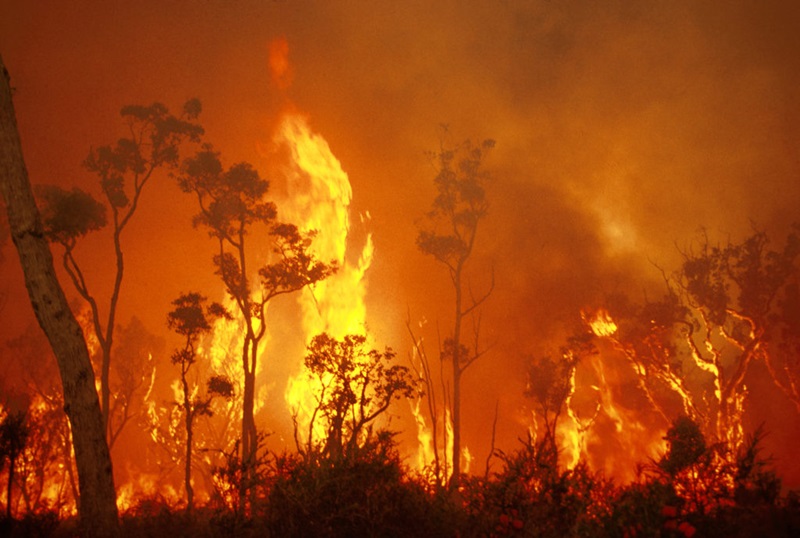Deciphering the Significance of an In-depth BAL Report for Your Property
Deciphering the Significance of an In-depth BAL Report for Your Property
Blog Article
How BAL Report Impacts Bush Fire Defense Steps
In the world of bush fire defense, the Structure Assault Level (BAL) record stands as an essential device that dramatically affects the safety and security and resilience of properties in fire-prone locations - BAL Report. The effect of a BAL analysis expands much beyond plain documentation; it acts as the cornerstone for figuring out the proper construction requirements and fire protection measures essential to alleviate the dangers posed by bushfires. As areas grapple with increasingly extreme fire periods, recognizing just how the BAL report forms these safety steps becomes paramount for policymakers, builders, and home owners alike
Comprehending the Bushfire Attack Degree

Significance of BAL Report Assessment

In Addition, the BAL report assessment serves as a fundamental action in complying with legal obligations and demands connected to bushfire protection. Regional councils and authorities typically mandate the entry of a BAL report as component of the preparation and building authorization process to ensure that residential properties are appropriately safeguarded against bushfire dangers. Stopping working to perform a detailed BAL report evaluation can result in inadequate protection measures, leaving residential or commercial properties prone to ravaging bushfire occurrences.
Building And Construction Standards Based Upon BAL
A detailed understanding of the Bushfire Strike Level (BAL) allows homeowner to implement building requirements tailored to their certain threat account. Building and construction requirements based upon BAL are vital in reducing the influence of bushfires on homes. The BAL rating classifies the prospective risk a building faces during a bushfire on a range from BAL-Low to BAL-FZ (Flame Zone) Each BAL degree corresponds to details building needs outlined in the Australian Typical AS3959-2018 Building of Buildings in Bushfire-Prone Locations. For example, properties categorized as BAL-Low may just call for standard measures such as clearing debris and keeping yards, while those read this post here in higher BAL categories need more robust steps like ash displays, fire-resistant materials, and sealed home windows. Sticking to these building and construction standards not only enhances the architectural durability of the home yet likewise boosts the total safety and security of residents during a bushfire occasion. Therefore, homeowner must very carefully consider their BAL ranking and comply with the matching construction criteria to sufficiently secure their homes and occupants.
Executing Fire Defense Measures
With the structure of construction criteria based on Bushfire Attack Level (BAL) in location, the emphasis now changes in the direction of the practical execution of fire defense actions to fortify buildings versus bushfire risks. Applying fire protection actions involves a mix of passive and energetic strategies to enhance the strength of structures in bushfire-prone locations. Easy measures include utilizing fireproof structure materials, setting up ember guards on vents, sealing voids in wall surfaces and roofing systems, and keeping a clear space around the building without combustible vegetation. Energetic steps encompass having firefighting tools easily offered, such as hoses and water pumps, as well as producing a defendable area around the building by removing vegetation and having a well-kept garden. Additionally, establishing an emptying plan and making certain all homeowners know emergency treatments are important parts of efficient fire security actions. By integrating both passive and active methods, homes can considerably reduce their vulnerability to bushfire incidents and boost the safety and security of passengers.
Shielding Homes Against Bushfires
Effectively guarding homes against the destructive impacts of bushfires needs a comprehensive and aggressive approach to fire protection procedures. Property owners staying in click to investigate bushfire-prone areas have to prioritize the implementation of different methods to improve their home's durability against wildfires. One fundamental element is creating a defensible room around the home by preserving a clear zone without flammable products. This consists of consistently cutting greenery, getting rid of dead plants, and ensuring a safe range between structures and trees. Mounting fire-resistant roofing materials can additionally substantially minimize the threat of ash assaults and straight flame contact. Additionally, sealing vents and gaps to avoid cinder breach, along with integrating fireproof windows and doors, can aid strengthen the home's defense against bushfires. Buying a dependable water source, such as a properly maintained automatic sprinkler or a specialized water tank, is critical for providing water during fire emergency situations - BAL Report. By accepting a proactive position and incorporating these safety steps, property owners can dramatically boost their chances of guarding their homes against bushfires.
Conclusion
In verdict, the Bushfire Attack Degree (BAL) record plays an essential function in identifying the essential protection procedures against bushfires. Implementing fire security steps based on the BAL record is vital in guarding homes from possible bushfire risks.
In assessing bushfire risk to properties, recognizing the Bushfire Attack Degree (BAL) is a vital part for executing reliable security steps. Overall, a clear understanding of the Bushfire Strike Level is crucial for applying appropriate defense steps and reducing the effect of bushfires on homes.

Report this page